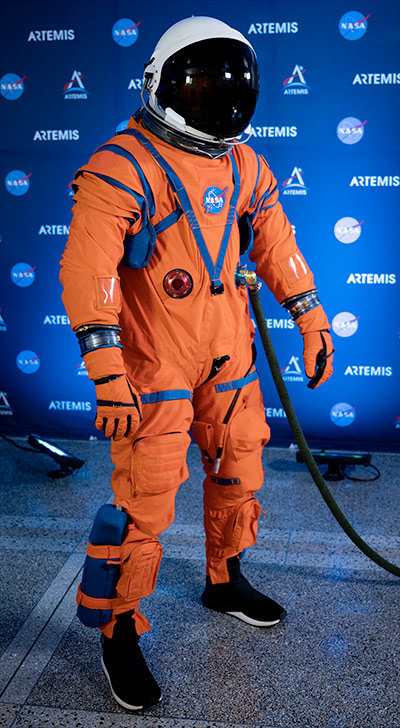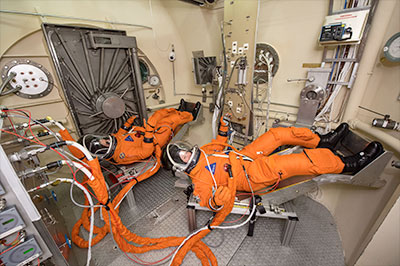Orion Suit Equipped to Expect the Unexpected on Artemis MissionsWhen astronauts are hours away from launching on Artemis missions to the Moon, they'll put on a brightly colored orange spacesuit called the Orion Crew Survival System (OCSS) suit. It is designed for a custom fit and equipped with safety technology and mobility features to help protect astronauts on launch day, in emergency situations, high-risk parts of missions near the Moon, and during the high-speed return to Earth.

Many missions require two spacesuits – one worn outside a spacecraft during spacewalks that is designed as a self-contained personal spaceship, and another worn inside a spacecraft during high-risk parts of a mission, such as inside Orion during launch and reentry through Earth's atmosphere. NASA is building both for Artemis missions. Drawing on six decades of spaceflight experience, NASA is developing its Exploration Extravehicular Mobility Unit, or xEMU, for moonwalks, and has reengineered elements of the crew survival suit worn on the space shuttle to enhance range of motion and improve safety for the astronauts who will wear it to get to the Moon and back to Earth.
The Orion suit, sometimes called a flight suit or a launch and entry suit, has been enhanced from head to toe with improvements to the suit worn on shuttle missions. Starting at the top, a number of features on the helmet allow for improved comfort and function. The helmet is lighter, stronger, comes in more than one size, helps reduce noise and is easier to connect to the communications system needed to talk to other crew members and mission control.
The outer cover layer, which is orange to make crew members easily recognizable in the ocean should they ever need to exit Orion without the assistance of recovery personnel, includes shoulder enhancements for better reach and is fire resistant. The suit is a pressure garment that includes a restraint layer to control the shape and ease astronauts' movements. A reengineered zipper also allows astronauts to quickly put the suit on and has increased strength. New adaptable interfaces supply air and remove exhaled carbon-dioxide. The suit has and improved thermal management that will help keep astronauts cool and dry. A liquid cooling garment is worn underneath the suit, a bit like thermal underwear with embedded cooling tubes, was revamped to be more breathable and easier to build.
While shuttle-era spacesuits came in off-the-shelf sizes like small, medium and large, the Orion suits will be custom fit for each crew member and accommodate astronauts of all sizes. The patterns of the suit now minimize the spots of discomfort common during the shuttle era when worn pressurized for long periods of time. The suits' gloves, the part of a spacesuit that receives the most wear and tear, are more durable and touch-screen compatible, and improvements to the boots provide protection in the case of fire, fit better, and help an astronaut move more nimbly.
Even though it's primarily designed for launch and reentry, the Orion suit can keep astronauts alive if Orion were to lose cabin pressure during the journey out to the Moon, while adjusting orbits in Gateway, or on the way back home. Astronauts could survive inside the suit for up to six days as they make their way back to Earth. The suits are also equipped with a suite of survival gear in the event they have to exit Orion after splashdown before recovery personnel arrive. Each suit will carry its own life preserver that contains a personal locator beacon, a rescue knife, and a signaling kit with a mirror, strobe light, flashlight, whistle, and light sticks.
Through extensive design and engineering enhancements, the Orion suit will help provide an additional layer of protection for astronauts who embark on Artemis missions to the Moon and prepare for future missions to Mars.













